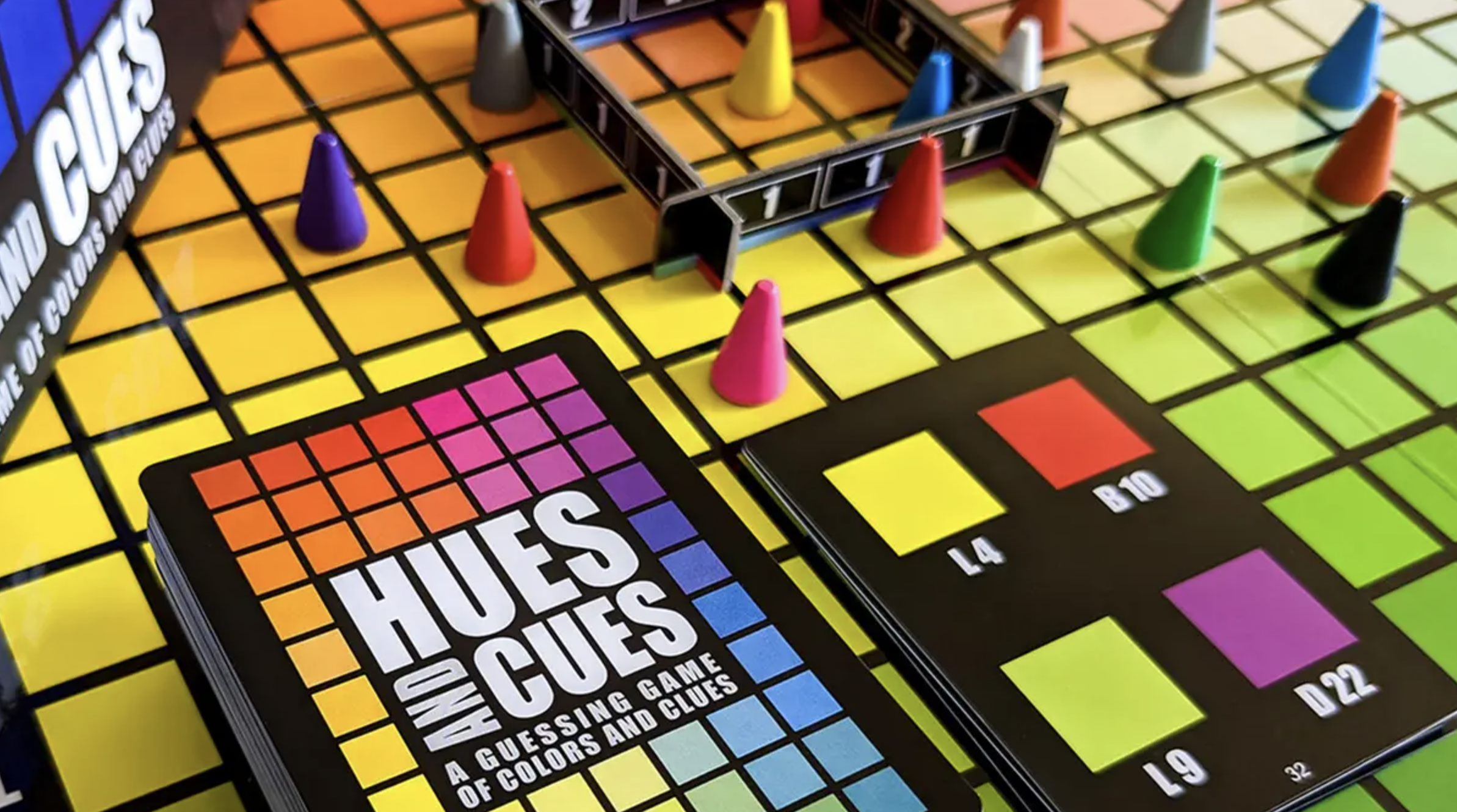Hues and Cues with the Colorblind
Be Careful Who You Choose for Competitive Analysis…
So the other night we went over to a friends house for dinner (Lent friday fish tacos).
I had a pretty busy week and was in the mood to pour myself some tequila and bust out a light, fun, party game.
And the “so-popular-it-is-now-at-Warlmart” game Hues and Clues had been burning a hold on my board game shelf, so as we cleared the table to dishes I cut off the plastic and began setting it up.
Now there are A LOT of marketing lessons tabletop games business owners can draw from Hues and Cues, and I am sure I will return to this game at a later date…
But for now I want to teach a very important marketing lesson:
You must accurately identify your competitors… the games and companies to whom you compare yourself.
Let me illustrate through the game…
Here is how Hues and Cues works:
The board is full of many, many colors
The colors are various shades of the primary colors, subtly distinct
The “drawer” will pull a card and choose one of the colors
They will then give a one-word clue to help guide everyone to that specific color
People place a meeple on the color they think the drawer is referring to
They give another clue, and the process repeats
If you are close enough to the real color, then you get points.
Now, full disclosure, I am TERRIBLE at games like this.
Any game where, as a player, I have to think about what the other person thinks is the right answer… I am atrociously bad at.
Think games like Apples to Apples and Charty Party; I lose these games by double digits. Even when I cheat at Apples to Apples (drawing more than 1 card at the end of a round) I am in dead last place. I’ll have 25 cards in my hand and I will STILL get absolutely dogwalked in Apples to Apples.
Before you get scared that your new copywriter is unintentionally revealing that he is incapable of understadning from another point of view, and will never understand your target audience AT ALL… its not like that, I promise!
In marketing (and my old ministry jobs) I was/am more than ok of viewing things from others perspectives so I can* communicate relevant, complex information as fast as possible. Its important stuff, so it matters to put in the effort to imagine from another’s perspective.
But in an ironic sense, when I sit down to play a silly game, all that goes out the window, and my “it SHOULD be ___" parts show up (shout out to IFS fans out there).
But I digress…
So we are playing this game and as usual I am giving terrible clues for fun (“Hathaway” for a shade of pink) and barely scoring points (apparently I think “royal blue” is too close to “navy blue”).
But I reckon: “Hey, it ain’t so bad, I’m in the middle of the pack. And at least I’m not as bad as Daniel”.
Daniel was losing.
Big time.
Like, not even close on his guesses.
And as I’m feeling ok about my position, he tells us:
“Man, its a lot harder when you are colorblind to reds and greens”
I WAS BEATING A COLORBLIND FRIEND AT A COLOR GAME.
That’s like bragging about beating someone in a wheelchair at basketball!
And once I knew that, I looked at my position on the board and…
I was in second to last!
Nothing had changed, I still suck at those games!
And while silly fun party games are no big deal…
You don’t want to experience the same problem with your tabletop games business.
You don’t want to THINK your marketing is doing great…because you are comparing it to the wrong competition:
Take email marketing… if you are selling a cheaper product like dice, comparing yourselves to something like Critical Role makes no sense. Yes, you are both DnD related, but one is ecommerce retail and the other is entertainment. Those will have very different expected numbers.
Or a Kickstarter… if you are selling a new VTT, you should be aiming to compete with other tech kickstarters, not the average Kickstarter for a new board game. And that means assessing your competition.
And social media… you should not despair over how many people are sharing your posts, if you are making a board game that is months away from launching!
You need to compare yourself to relevant competition.
A “competitive comparison” is something I include on nearly every branding packet I make for my customers. Because when you position yourself against the competition, you clarify how you are similar and how you are different.
So as you are crafting your features/benefits, marketing strategy, and brand messaging, first take a look at your competition:
Find 5 companies
All in the same industry
All creating a similar product/offering a similar service
At a diversity of price points
To a range of target audiences
Emphasizing different marketing channels
See what they are doing, what they are not doing… what they are saying, what they are not saying… how they are saying it, how they are not saying it…
And carve out a place for your company/brand that is SPECIAL.
